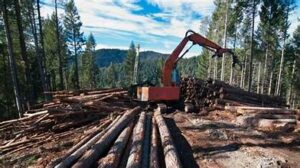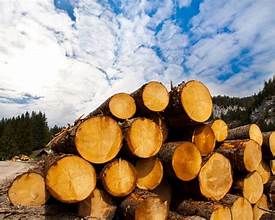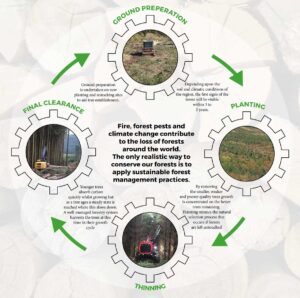
In recent years, the timber industry has undergone significant changes as it adapts to growing environmental concerns. Eco-friendly logging practices have become a critical aspect of this transformation, driving innovation and sustainability in the sector. This article explores the latest trends and technologies in eco-friendly logging, highlighting how these practices are reshaping the timber industry.
The Shift Towards Eco-Friendly Logging
1. Understanding Eco-Friendly Logging
Eco-friendly logging, or sustainable forestry, involves practices that minimize environmental impact while meeting the demand for timber. The goal is to balance the economic benefits of logging with the need to preserve forest ecosystems, biodiversity, and soil health. Key principles include reducing deforestation, maintaining forest cover, and ensuring that logging operations do not harm wildlife habitats.
2. The Benefits of Sustainable Logging
Adopting eco-friendly logging practices offers several benefits:
- Environmental Preservation: By reducing deforestation and promoting reforestation, these practices help maintain biodiversity and prevent soil erosion.
- Climate Change Mitigation: Sustainable logging helps sequester carbon dioxide in forests, mitigating climate change.
- Economic Growth: Eco-friendly logging can lead to the development of new markets and job opportunities within the green economy.
Key Trends in Eco-Friendly Logging
1. Precision Logging Technologies
One of the most significant advancements in eco-friendly logging is the use of precision logging technologies. These technologies include:
- GPS and GIS Mapping: GPS (Global Positioning System) and GIS (Geographic Information Systems) enable precise mapping of forest areas, helping loggers identify optimal areas for harvesting while avoiding sensitive zones.
- Drones: Drones are used for aerial surveys to monitor forest health, assess damage, and plan logging operations with minimal disturbance.
2. Reduced Impact Logging (RIL)
Reduced Impact Logging (RIL) is a set of techniques designed to minimize the environmental impact of logging. Key components of RIL include:
- Selective Logging: Instead of clear-cutting large areas, selective logging targets specific trees for removal, preserving the overall forest structure.
- Log Skidding and Extraction: Advanced machinery, such as cable systems and skidders, is used to move logs with minimal soil disturbance and damage to surrounding vegetation.
3. Certification Programs
Certification programs play a crucial role in promoting sustainable logging practices. Notable programs include:
- Forest Stewardship Council (FSC): FSC certification ensures that forests are managed according to strict environmental, social, and economic criteria.
- Programme for the Endorsement of Forest Certification (PEFC): PEFC certification focuses on promoting sustainable forest management practices and improving market access for certified products.
Emerging Technologies in Sustainable Logging
1. Biomass Utilization
Biomass utilization involves using wood residues and by-products from logging operations to produce energy or other products. This approach helps reduce waste and creates additional revenue streams. Technologies such as:
- Wood Pellets: Wood pellets are used as a renewable energy source for heating and power generation.
- Biochar: Biochar is a form of charcoal produced from biomass, which can improve soil health and carbon sequestration.
2. Forest Management Software
Advanced forest management software is increasingly used to optimize logging operations. These tools offer features such as:
- Real-Time Data Analysis: Software can analyze data on forest conditions, logging progress, and environmental impact to make informed decisions.
- Predictive Modeling: Predictive models help forecast the long-term effects of logging activities on forest ecosystems, enabling better planning and management.
3. Innovative Machinery
The development of innovative logging machinery contributes to more sustainable practices. Examples include:
- Harvesters and Forwarders: Modern harvesters and forwarders are designed to be more efficient and less damaging to the environment, with features such as low-impact tracks and precise cutting mechanisms.
- Electric and Hybrid Equipment: Electric and hybrid logging equipment reduces greenhouse gas emissions and reliance on fossil fuels.
The Future of Eco-Friendly Logging
The future of eco-friendly logging will likely be shaped by continued advancements in technology and a growing emphasis on sustainability. Key factors to watch include:
- Increased Adoption of Green Practices: As awareness of environmental issues rises, more logging companies are expected to adopt sustainable practices and technologies.
- Regulatory Changes: Governments and organizations may implement stricter regulations and incentives to promote eco-friendly logging.
- Collaboration and Innovation: Collaboration between industry stakeholders, researchers, and environmental groups will drive innovation and the development of new solutions for sustainable forestry.
Conclusion
Eco-friendly logging practices are revolutionizing the timber industry by integrating advanced technologies and sustainable approaches. These practices not only reduce environmental impact but also contribute to economic growth and climate change mitigation. As the industry continues to evolve, the adoption of innovative solutions and a commitment to sustainability will be essential for ensuring the long-term health of our forests and the future of the timber industry.


